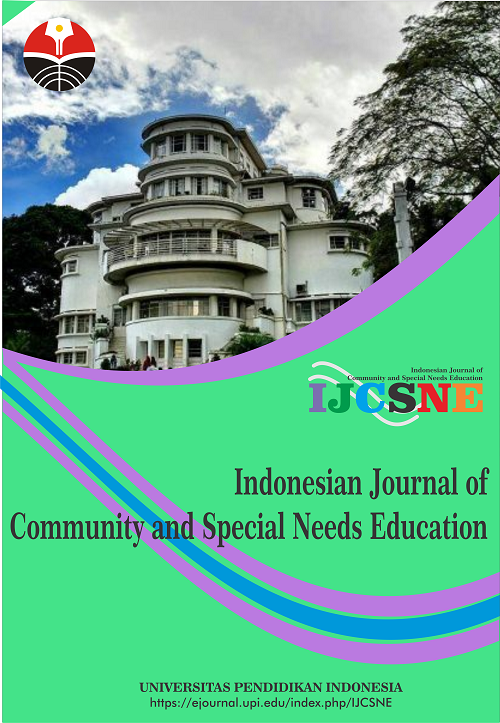Preference of Generation Z Towards Social Interaction
Abstract
Keywords
Full Text:
PDFReferences
Barth, S., and De Jong, M. D. (2017). The privacy paradox–investigating discrepancies between expressed privacy concerns and actual online behavior–a systematic literature review. Telematics and informatics, 34(7), 1038-1058.
Chen, H. T., and Li, X. (2017). The contribution of mobile social media to social capital and psychological well-being: Examining the role of communicative use, friending and self-disclosure. Computers in Human Behavior, 75, 958-965.
Chugh, R., and Ruhi, U. (2018). Social media in higher education: A literature review of Facebook. Education and Information Technologies, 23(2), 605-616.
De Wolf, R. (2020). Contextualizing how teens manage personal and interpersonal privacy on social media. New Media and Society, 22(6), 1058-1075.
Dimock, M. (2019). Defining generations: Where Millennials end and Generation Z begins. Pew Research Center, 17(1), 1-7.
Dobson-Lohman, E. (2020). Courtship practices, romantic relationship initiation, and mate selection in the online dating environment. Journal of Research in Gender Studies, 10(1), 59-65.
Gil de Zúñiga, H., Diehl, T., Huber, B., and Liu, J. (2017). Personality traits and social media use in 20 countries: How personality relates to frequency of social media use, social media news use, and social media use for social interaction. Cyberpsychology, Behavior, and Social Networking, 20(9), 540-552.
Haji, H. H., and Bakir, S. N. (2019). The use of emoticons among university students: A pragmatic study. Zanco Journal of Humanity Sciences, 23(1), 278-290.
Hashim N., and Rifa’i, M. M. (2020) Combining chatbot and social media: Enhancing personal learning environment (PLE) in Language Learning. Indonesian Journal of Science and Technology, 5(3), 487-506.
Hashim, S., Masek, A., Abdullah, N. S., Paimin, A. N., and Muda, W. H. N. W. (2020). Students’ intention to share information via social media: A case study of COVID-19 pandemic. Indonesian Journal of Science and Technology, 5(2), 236-245.
Izazi, Z. Z., and Tengku-Sepora, T. M. (2020). Slangs on social media: Variations among Malay language users on Twitter. Pertanika Journal of Social Sciences and Humanities, 28(1), 17-34.
Kim, J. H. (2017). Smartphone-mediated communication vs. face-to-face interaction: Two routes to social support and problematic use of smartphone. Computers in Human Behavior, 67, 282-291.
Mulyahati, T., and Rasiban, L. M. (2021) Analysis of the gender equality application in Japanese and Indonesian elementary school education through class pickets. Indonesian Journal of Community and Special Needs Education, 1(1), 11-14.
Nour, B., Sharif, K., Li, F., Biswas, S., Moungla, H., Guizani, M., and Wang, Y. (2019). A survey of Internet of Things communication using ICN: A use case perspective. Computer Communications, 142, 95-123.
Oliver, S. (2019). Communication and trust: rethinking the way construction industry professionals and software vendors utilise computer communication mediums. Visualization in Engineering, 7(1), 1-13.
Opesade, A. O., Ogunshola, H., and Abiola, A. M. (2020). Mate-selection and courtship via online social networking sites: Graduate students' perception and adoption propensity. Ibadan Journal of Sociology, 11(2), 25-25.
Qotrunnada, Q., and Nurani, A. S. (2021) Teenagers knowledge about traditional West Java cakes. Indonesian Journal of Community and Special Needs Education, 1(1), 15-18.
Rahi, S. (2017). Research design and methods: A systematic review of research paradigms, sampling issues and instruments development. International Journal of Economics and Management Sciences, 6(2), 1-5.
Saputra, M., Siddiq, A., and Huda, I. (2020). Social media and digital citizenship: The urgency of digital literacy in the middle of a disrupted society era. International Journal of Emerging Technologies in Learning, 15(7), 156-161.
Sharma, G. (2017). Pros and cons of different sampling techniques. International Journal of Applied Research, 3(7), 749-752.
Toivonen, T., Heikinheimo, V., Fink, C., Hausmann, A., Hiippala, T., Järv, O., Tenkanen, H., and Di Minin, E. (2019). Social media data for conservation science: A methodological overview. Biological Conservation, 233, 298-315.
Winarni, R. S., and Rasiban, L. M. (2021) Perception of Japanese students in using online video as a learning media. Indonesian Journal of Educational Research and Technology, 1(1), 15-16.
DOI: https://doi.org/10.17509/ijcsne.v1i1.33399
Refbacks
- There are currently no refbacks.
Copyright (c) 2021 Universitas Pendidikan Indonesia

This work is licensed under a Creative Commons Attribution-ShareAlike 4.0 International License.















